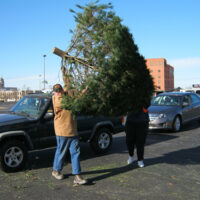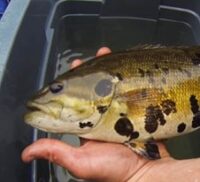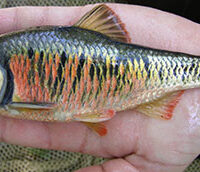 Purdue University - Extension - Forestry and Natural Resources
Purdue University - Extension - Forestry and Natural Resources
Got Nature? Blog
When do you need to discard your real Christmas tree? What options are there in disposing the tree?
Check out these tips from our Purdue experts:
Lenny Farlee, Purdue Extension Forester with Forestry and Natural Resources, in interview with the WLFI news team shares the first steps is to remove all decorations. “Several municipalities here in the area will either take the trees for mulching or composting. So if you don’t want to fool with the tree anymore, that’s a great option. You can just take it to the curb, or certain locations, and they’ll take care of it for you and it gets reused or recycled into usable material,” explains Farlee. Choosing to keep the tree in your backyard is a great wildlife friendly option. Lenny shares how important it is to remove your tree in a timely manner to avoid any fire hazards in your house. The video explains on how you can test your tree to see if it should be discarded. See video and full article for more options: Options for Getting Rid of Real Christmas Tree, wlfi.com.
John Woodmansee, Purdue Extension Educator-Agriculture Natural Resources (ANR), also shares tips in the Purdue Extension article Recycle Your Christmas Tree. If you have permission and/or have access to a private pond you can discard your tree in the pond to improve fish habitat.
Resources:
A Choose-and-Cut Pine and Fir Christmas Tree Case Study, The Education Store, Purdue Extension’s resource center
Living Christmas Trees For The Holidays and Beyond, The Education Store
Tips for First-Time Buyers of Real Christmas Trees, The Education Store
Growing Christmas Trees, The Education Store
Selecting an Indiana-Grown Christmas Tree, The Education Store
Repurposing Your Real Christmas Tree, Purdue Extension News
An Introduction to Trees of Indiana, The Education Store
Native Trees of the Midwest, The Education Store
Shrubs and Woody Vines of Indiana and the Midwest, The Education Store
ID That Tree, Playlist, Subscribe to Purdue Extension – Forestry and Natural Resources YouTube Channel
A Woodland Management Moment, Playlist, Purdue Extension – FNR YouTube Channel
Investing in Indiana Woodlands, The Education Store
Forest Improvement Handbook, The Education Store
Finding help from a professional forester, Indiana Forestry & Woodland Owners Association
District Foresters for 10 plus acres, Indiana Department of Natural Resources
Wood Products, FNR Concentration
Diana Evans, Extension & Web Communications Specialist
Purdue University Department of Forestry and Natural Resources
MyDNR, Indiana’s Outdoor Newsletter: Blotchy bass syndrome (BBS) is the occurrence of black ink-like spots (hyperpigmentation) on the skin, fins, and/or mouths of freshwater bass species.
Researchers once thought that melanosis was caused by sun exposure or stress related to fishing, temperature, or pollution; however, researchers recently discovered that a family of viruses was associated with the black spots in fish that were in poor body condition.
The Division of Fish & Wildlife is partnering with the United States Geological Survey (USGS) to collect samples from black bass species to test for BBS and needs your help. DNR encourages anglers to report observations of affected bass when you are fishing, so they and USGS can learn more about the effect of this family of viruses.
How to participate:
- Download the MyCatch app from Angler’s Atlas.
- Register for the “Blotchy Bass Bonanza.”
- Take photos of all the bass you’ve caught (preferably on a measuring board) while fishing and upload them to the MyCatch app.
The Blotchy Bass Bonanza runs from March 1, 2023 —Feb. 29, 2024. The Indiana DNR is not associated with the MyCatch app or the Blotchy Bass Bonanza.
Newsletter can be found online: MyDNR Email Newsletter
For more information please visit Investigating blotch bass syndrome in black basses.
Resources:
FNR Extension Aquaculture and Aquatic Resources
FNR Extension Publications
Indiana Pond Fish, Species Identification Card Set, Purdue Extension – Forestry and Natural Resources (FNR)
Walleye Farmed Fish Fact Sheet, The Education Store, Purdue Extension’s resource center
Pacific White Shrimp Farmed Fact Sheet, The Education Store
Yellow Perch Farmed Fish Fact Sheet, The Education Store
Tilapia Farmed Fish Fact Sheet, The Education Store
Rainbow Trout Farmed Fish Fact Sheet, The Education Store
American Paddlefish, The Education Store
A Guide to Small-Scale Fish Processing Using Local Kitchen Facilities, The Education Store
Aquaculture Family Coloring Book Development, The Education Store
Eat Midwest Fish, Illinois-Indiana Sea Grant online resource hub
Aquatics & Fisheries Videos, Purdue Extension-Forestry and Natural Resources YouTube Channel Playlist
Indiana Department of Natural Resources, Department of Fish & Wildlife
The classic and trusted book “Fifty Common Trees of Indiana” by T.E. Shaw was published in 1956 as a user-friendly guide to local species. Nearly 70 years later, the publication has been updated through a joint effort by the Purdue Department of Forestry and Natural Resources, Indiana 4-H, and the Indiana Department of Natural Resources, and reintroduced as “An Introduction to Trees of Indiana.”
The full publication is available for download for $7 in the Purdue Extension Education Store. The field guide helps identify common Indiana woodlot trees. 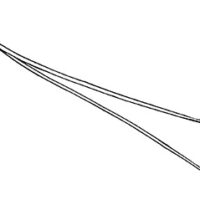
Each week, the Intro to Trees of Indiana web series will offer a sneak peek at one species from the book, paired with an ID That Tree video from Purdue Extension forester Lenny Farlee to help visualize each species as it stands in the woods. Threats to species health as well as also insight into the wood provided by the species, will be provided through additional resources as well as the Hardwoods of the Central Midwest exhibit of the Purdue Arboretum, if available.
This week, we meet the red pine, or Pinus resinosa, which is not native to Indiana, but has been planted widely across the state.
This conifer has clusters of two slender, flexible, green or yellow green needles, which are four to six inches long. If the needles are bent, they will break cleanly, unlike that of ornamentally planted Austrian pine. The long needles cause a very tufted look to the tree canopy.
Bark on the red pine is scaly and red-orange in color in younger trees and platy and reddish brown in older trees. Cones are egg-shaped, approximately two inches long and have smooth scales.
Red pine tends to be very, straight and tall, growing to between 50 and 80 feet tall. This species, which can be as tall as 200 feet, is typically found on sandy, well-drained soils with low pH and full sun. The natural range of the red pine is the northeastern United States and southern Canada near the Great Lakes and St. Lawrence River. The species can be found as far west as Minnesota and into Manitoba. It can be found dipping south into Wisconsin, Illinois, Michigan, West Virginia and Pennsylvania.
For full article with additional photos view: Intro to IN Trees: Red Pine, Forestry and Natural Resources’ News.
If you have any questions regarding wildlife, trees, forest management, wood products, natural resource planning or other natural resource topics, feel free to contact us by using our Ask an Expert web page.
Other Resources:
ID That Tree: Red Pine
Morton Arboretum: Red Pine
Diplodia Tip Blight of Two-Needle Pines, The Education Store, Purdue Extension’s resource center
Borers of Pines and Other Needle Bearing Evergreens in Landscapes, The Education Store
Native Trees of the Midwest, The Education Store
Shrubs and Woody Vines of Indiana and the Midwest, The Education Store
Investing in Indiana Woodlands, The Education Store
Forest Improvement Handbook, The Education Store
Purdue Arboretum Explorer
The Woody Plant Seed Manual, U.S. Forest Service
ID That Tree, Purdue Extension-Forestry & Natural Resources (FNR) YouTube playlist
Woodland Management Moment , Purdue Extension-FNR YouTube playlist
Wendy Mayer, FNR Communications Coordinator
Purdue University Department of Forestry and Natural Resources
Lenny Farlee, Extension Forester
Purdue University Department of Forestry and Natural Resources
MyDNR, Indiana’s Outdoor Newsletter: With around 200 different species of fish in Indiana waters, it’s not uncommon that Hoosier anglers might hook a species they’ve never seen before.
For more information and how to identify fish please visit Fishing Species & Identification.
Send a picture with the location information and date of your catch to fishid@dnr.IN.gov, and a biologist will respond to you with an identification. Not only do you receive an identification, DNR biologists benefit by gaining new information on the distribution of some of our less common species.
Resources:
FNR Extension Aquaculture and Aquatic Resources
FNR Extension Publications
Indiana Pond Fish, Species Identification Card Set, Purdue Extension – Forestry and Natural Resources (FNR)
Walleye Farmed Fish Fact Sheet, The Education Store, Purdue Extension’s resource center
Pacific White Shrimp Farmed Fact Sheet, The Education Store
Yellow Perch Farmed Fish Fact Sheet, The Education Store
Tilapia Farmed Fish Fact Sheet, The Education Store
Rainbow Trout Farmed Fish Fact Sheet, The Education Store
American Paddlefish, The Education Store
A Guide to Small-Scale Fish Processing Using Local Kitchen Facilities, The Education Store
Aquaculture Family Coloring Book Development, The Education Store
Eat Midwest Fish, Illinois-Indiana Sea Grant online resource hub
Aquatics & Fisheries Videos, Purdue Extension-Forestry and Natural Resources YouTube Channel Playlist
Indiana Department of Natural Resources, Department of Fish & Wildlife
The classic and trusted book “Fifty Common Trees of Indiana” by T.E. Shaw was published in 1956 as a user-friendly guide to local species. Nearly 70 years later, the publication has been updated through a joint effort by the Purdue Department of Forestry and Natural Resources, Indiana 4-H, and the Indiana Department of Natural Resources, and reintroduced as “An Introduction to Trees of Indiana.”
The full publication is available for download for $7 in the Purdue Extension Education Store. The field guide helps identify common Indiana woodlot trees.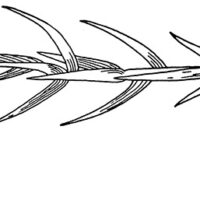
Each week, the Intro to Trees of Indiana web series will offer a sneak peek at one species from the book, paired with an ID That Tree video from Purdue Extension forester Lenny Farlee to help visualize each species as it stands in the woods. Threats to species health as well as also insight into the wood provided by the species, will be provided through additional resources as well as the Hardwoods of the Central Midwest exhibit of the Purdue Arboretum, if available.
This week, we meet Eastern red cedar or Juniperus virginiana, one of the most common coniferous trees in Indiana.
This evergreen tree, also known as aromatic cedar, is unique in that it has both scale-like and sharp-pointed leaves. The foliage can be soft to the touch on mature trees or be quite sharp in seedlings and younger trees. The foliage turns from green to blueish green in spring to red or brown in winter.
The red cedar features a shreddy bark on both the trunk and branches, which is gray brown in color. It is slow growing but may live longer than 450 years.
The fruit of red cedar is a small cone, which resembles and is often referred to as a berry, that is blue in color and features a whitish bloom on the surface. The fruit is preferred by birds and wildlife of many varieties and is thus spread to roadsides, old pastures and other locations with plenty of sun and disturbed soil. It can be found in forest understories, but prefers direct sunlight.
For full article with additional photos view: Intro to Trees of Indiana: Eastern Red Cedar, Forestry and Natural Resources’ News.
If you have any questions regarding wildlife, trees, forest management, wood products, natural resource planning or other natural resource topics, feel free to contact us by using our Ask an Expert web page.
Other Resources:
ID That Tree: Eastern Red Cedar
Morton Arboretum: Eastern Red Cedar
Fruit Diseases: Cedar Apple and Related Rusts on Apples in the Home Landscape
Diseases of Landscape Plants: Cedar Apple and Related Rusts on Landscape Plants
Purdue Arboretum Explorer
The Woody Plant Seed Manual, U.S. Forest Service
Fifty Trees of the Midwest app for the iPhone, The Education Store
Native Trees of the Midwest, The Education Store
Shrubs and Woody Vines of Indiana and the Midwest, The Education Store
Investing in Indiana Woodlands, The Education Store
Forest Improvement Handbook, The Education Store
ID That Tree, Purdue Extension-Forestry & Natural Resources (FNR) YouTube playlist
Woodland Management Moment , Purdue Extension-FNR YouTube playlist
Eastern Redcedar, Purdue Fort Wayne
Wendy Mayer, FNR Communications Coordinator
Purdue University Department of Forestry and Natural Resources
Lenny Farlee, Extension Forester
Purdue University Department of Forestry and Natural Resources
The classic and trusted book “Fifty Common Trees of Indiana” by T.E. Shaw was published in 1956 as a user-friendly guide to local species. Nearly 70 years later, the publication has been updated through a joint effort by the Purdue Department of Forestry and Natural Resources, Indiana 4-H, and the Indiana Department of Natural Resources, and reintroduced as “An Introduction to Trees of Indiana.”
The full publication is available for download for $7 in the Purdue Extension Education Store. The field guide helps identify common Indiana woodlot trees.
Each week, the Intro to Trees of Indiana web series will offer a sneak peek at one species from the book, paired with an ID That Tree video from Purdue Extension forester Lenny Farlee to help visualize each species as it stands in the woods. Threats to species health as well as also insight into the wood provided by the species, will be provided through additional resources as well as the Hardwoods of the Central Midwest exhibit of the Purdue Arboretum, if available.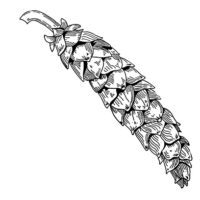
This week, we meet the eastern white pine or Pinus strobus, which historically was one of the tallest trees in the eastern United States.
This conifer is the only five-needled pine native to Indiana, meaning that the bundles of needles coming off the branches in one location, also called fascicles, include five needles per bundle. These needles are typically between two and four inches long and are blue green in color. Needles remain on the tree for two to three years before dropping in the fall.
The bark on younger trees is dark and relatively smooth, and becomes quite furrowed in older trees. The eastern white pine adds a ring of side branches and a terminal shoot yearly with age.
The cones of this species are up to eight inches long, have relatively thin scales and are often covered with quite a bit of white sap or pitch. Cones remain on the tree for two years.
Eastern white pine trees typically grow to between 65 and 100 feet tall, but can exceed 150 feet tall in old growth forests. This species prefers acidic, moist and well-drained soil, but can tolerate alkaline soils. Eastern white pine is native to the central and eastern United States and Canada. Its range extends as far west as Arkansas, Missouri, Iowa and Minnesota in the U.S. and Manitoba in Canada. Its distribution reaches south through the Great Lakes states and in the Appalachian Mountains into northern Georgia as well as east along the Atlantic seaboard.
For full article with additional photos view: Intro to Trees of Indiana: Eastern White Pine, Forestry and Natural Resources’ News.
If you have any questions regarding wildlife, trees, forest management, wood products, natural resource planning or other natural resource topics, feel free to contact us by using our Ask an Expert web page.
Other Resources:
ID That Tree: Eastern White Pine
Morton Arboretum: Eastern White Pine
Tree Diseases: White Pine Decline in Indiana
White Pine and Salt Tolerance
U.S. Forest Service Database – Eastern White Pine
Purdue Arboretum Explorer
The Woody Plant Seed Manual, U.S. Forest Service
Fifty Trees of the Midwest app for the iPhone, The Education Store
Native Trees of the Midwest, The Education Store
Shrubs and Woody Vines of Indiana and the Midwest, The Education Store
Investing in Indiana Woodlands, The Education Store
Forest Improvement Handbook, The Education Store
ID That Tree, Purdue Extension-Forestry & Natural Resources (FNR) YouTube playlist
Woodland Management Moment , Purdue Extension-FNR YouTube playlist
Wendy Mayer, FNR Communications Coordinator
Purdue University Department of Forestry and Natural Resources
Lenny Farlee, Extension Forester
Purdue University Department of Forestry and Natural Resources
Channel catfish, commonly known as catfish, are freshwater finfish in the Ictaluridae family. Their native range extends from southern Canada and the Central US to Mexico. They are popular to catch and eat and have been introduced throughout the US and the world for food and recreation. This fact sheet publication shares how to identify the catfish, where they can be found, where you can find catfish products and if they are safe to eat. You will also enjoy the recipe found on this fact sheet.
The Channel Catfish publication is the seventh in a series of consumer guides that describe fish and shellfish farmed in the Midwest region of the United States. (See FNR-608-W, Walleye Farmed Fish Fact Sheet, FNR-618-W, Yellow Perch Farmed Fish Fact Sheet, FNR-621-W, Tilapia Farmed Fish Fact Sheet, FNR-622-W, Rainbow Trout Farmed Fish Fact Sheet, FNR-623-W, Pacific White Shrimp Farmer Fish Fact Sheet and FNR-625-W, American Paddlefish Farmed Fish Fact Sheet). The fact sheet also includes culinary characteristics, cooking tips and a recipe for Classic Fried Catfish.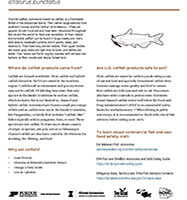
This publication is a collaborative project of Illinois-Indiana Sea Grant, the North Central Regional Aquaculture Center, University of Illinois Extension, and Purdue University’s Department of Forestry and Natural Resources.
About the Author
Amy Shambach is Illinois-Indiana Sea Grant’s (IISG) aquaculture marketing outreach associate who works with the aquaculture industry in the USDA’s North Central Regional Aquaculture Center. Her work focuses on the demand side of domestic farm raised seafood products. She provides outreach and extension services to producers, potential producers, and consumers. Along with Dr. Kwamena Quagrainie, producers, aquaculture associations, and consumers, she works to determine the needs of stakeholders.
To receive the free download for the Channel Catfish please visit The Education Store.
Resources:
Walleye Farmed Fish Fact Sheet, The Education Store, Purdue Extension’s resource center
Pacific White Shrimp Farmed Fact Sheet, The Education Store
Yellow Perch Farmed Fish Fact Sheet, The Education Store
Tilapia Farmed Fish Fact Sheet, The Education Store
Rainbow Trout Farmed Fish Fact Sheet, The Education Store
American Paddlefish, The Education Store
A Guide to Small-Scale Fish Processing Using Local Kitchen Facilities, The Education Store
Aquaculture Family Coloring Book Development, The Education Store
Eat Midwest Fish, Illinois-Indiana Sea Grant online resource hub
Aquatics & Fisheries Videos, Purdue Extension-Forestry and Natural Resources YouTube Channel Playlist
Amy Shambach, Aquaculture Marketing Outreach Associate
Purdue Department of Forestry and Natural Resources/Illinois Indiana Sea Grant Program
In this episode of A Moment in the Wild, extension wildlife specialist Zach Truelock introduces the American toad. He explains where you might find this species, how to identify it and differentiate it from Fowler’s toads and also its mating and metamorphosis process.
If you have any questions regarding wildlife, trees, forest management, wood products, natural resource planning, or other natural resource topics, feel free to contact us by using our Ask an Expert web page.
Resources
A Moment in the Wild, Playlist, Purdue Extension – Forestry and Natural Resources
Sounds of Frogs and Toads of Indiana, Purdue Extension – Forestry and Natural Resources
Ask An Expert: Anurans (Frogs and Toads), Got Nature? Blog, Purdue Extension – Forestry and Natural Resources
Frogs and Toads of Indiana, The Education Store, Purdue Extension resource center
Forestry Management for Reptiles and Amphibians: A Technical Guide for the Midwest, The Education Store
Appreciating Reptiles and Amphibians in Nature, The Education Store
The Nature of Teaching: Adaptations for Aquatic Amphibians, The Education Store, Purdue Extension resource center
Amphibians: Frogs, Toads, and Salamanders, Purdue Nature of Teaching
Nature of Teaching website and YouTube Playlist, Purdue Extension
Help the Hellbender, Playlist & Website
Help the Hellbender, North America’s Giant Salamander, The Education Store
Zach Truelock, Hellbender Technician
Purdue Forestry and Natural Resources
Rod Williams, Assistant Provost for Engagement/Professor of Wildlife Science
Purdue University Department of Forestry and Natural Resources
Purdue Forestry and Natural Resources’ extension efforts over the past two years amidst the COVID-19 pandemic were recognized in the Purdue Extension Specialist Quarterly newsletter.
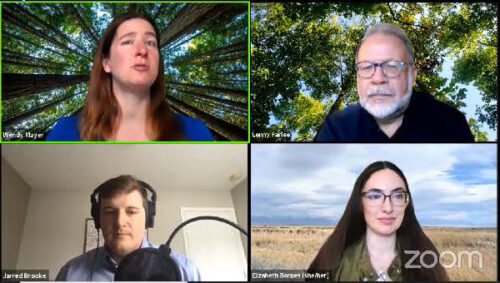 The transition to virtual content brought expertise across subject matter areas, ranging from forestry and wildlife, to aquatic sciences and entomology, to the masses in the form of several video series which collectively earned nearly 150,000 views.
The transition to virtual content brought expertise across subject matter areas, ranging from forestry and wildlife, to aquatic sciences and entomology, to the masses in the form of several video series which collectively earned nearly 150,000 views.
The FNR Extension team included: Jay Beugly, Jarred Brooke, Nick Burgmeier, Barny Dunning, Diana Evans, Lenny Farlee, Jason Hoverman, Liz Jackson, Brian MacGowan, Patrick McGovern, Wendy Mayer, Charlotte Owings, Lindsey Purcell, Bee Redfield, Shelby Royal, Bob Rode, Kara Salazar, Mike Saunders, Amy Shambach, Rod Williams, Mitch Zischke, as well as frequent Entomology contributors: Elizabeth Barnes, Cliff Sadof.
The feature in the fourth quarter newsletter begins:
“While Covid caused limitations on travel and in-person events nationwide, across Indiana, many were spending more time in outdoor recreational activities, hiking, bird-watching, hunting and fishing, or managing natural resources properties. Adjusting to the pandemic, the FNR team created an innovative and team-oriented instruction approach through skill-building in video production with coordinated connection and crosspromotion of resources.
“Forestry and Natural Resources (FNR) faculty, specialists, staff, and students, with invited partners across research and Extension, delivered 45-minute Ask an Expert Facebook Live programs for 35 weeks. Programs covered many FNR specialties: Animals & Insects (bats, bird, cicadas, coyotes, deer, fish, frogs, hellbenders, moles, pollinators, salamanders, snakes, toads, turtles, and wood pests); Plants & Ecosystems (invasive plant species, hardwood ecosystems, native grasses for wildlife, conservation tree planting, rainscaping, fall food plots, and selecting, planting and inspecting trees); and Management & Operations (prescribed fires, aquatic plant and pond management, and fish and wildlife management).
Resources:
Ask An Expert Playlist, Purdue Extension – Forestry and Natural Resources (FNR) YouTube Channel
ID That Tree Playlist, Purdue Extension – FNR YouTube Channel
A Woodland Management Moment Playlist, Purdue Extension – FNR YouTube Channel
Wildlife Habitat Hint Playlist, Purdue Extension – FNR YouTube Channel
Subscribe to the Purdue Extension – Forestry and Natural Resources YouTube Channel
Wendy Mayer, FNR Communications Coordinator
Purdue University Department of Forestry and Natural Resources
Diana Evans, Extension and Web Communication Specialist
Purdue University Department of Forestry and Natural Resources
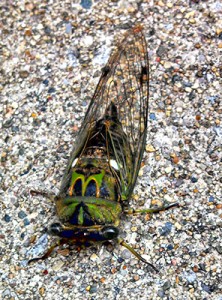 The interdisciplinary team behind The Brood X Cicada Outreach in the spring and summer of 2021 has been selected as the recipients of the Purdue Cooperative Extension Specialists’ Association (PUCESA) Team Award.
The interdisciplinary team behind The Brood X Cicada Outreach in the spring and summer of 2021 has been selected as the recipients of the Purdue Cooperative Extension Specialists’ Association (PUCESA) Team Award.
The Team Award recognizes innovative Extension programming by a team of specialists and their allied partners.
The cicada team, led by exotic forest pest educator Dr. Elizabeth Barnes, created a website, videos, social media posts, citizen science projects and more to educate the public about 17-year cicadas to prevent panic by framing the emergence as a wonder to be enjoyed and not a plague to be endured.
Cicada information ranged from myth busting – sharing that cicadas do not bite people or cause long-term harm to trees and are not “a plague of locusts,”- to general identification information, tree health, and human and animal health information related to the emergence. In addition, the team produced a poster illustrating cicadas and look-alike insects, shared jewelry and art projects, and even put on a cicada cookie decorating contest in conjunction with the Virtual Bug Bowl event.
“The Cicada Team anticipated the need for solid information for the public well in advance of the emergence of the 17-year periodical cicada,” Tom Creswell, Director of the Plant and Pest Diagnostic Laboratory, said in a letter of supporting the team’s nomination. “They did an amazing job in creating an engaging and information packed website, complete with identification aids, cicada related children’s activities, fruit tree protection information and offered a newsletter signup for more information. This allowed us to much more easily field questions related to the cicada emergency and allowed us to point to Purdue generated information with confidence in the accuracy.”
The team included personnel from the departments of Entomology, Forestry and Natural Resources, and Horticulture and Landscape Architecture as well as Purdue Extension educators, in order to craft specific messaging for nursery crop producers, foresters, fruit producers, landscapers and homeowners.
The team’s website became a source of information for the public and media as well as extension educators across the state, introducing the insect and preventing panic spraying of insecticides or the hiring of contractors selling false promises of protection. The site had nearly 23,000 unique views, while videos deployed by the team on Facebook and YouTube were viewed more than 12,000 times. The related social media campaign reached nearly 85,000 individuals.
More than 30 local and national news outlets ranging from the Indianapolis Star and South Bend Tribune to NBC, CBS, ABC, NPR, Disney Plus and National Geographic picked up on the buzz created by the cicada team. Barnes conducted 47 media interviews herself, while many other local extension educators and specialists also gave interviews to various outlets armed with information from the Cicada website.
Resources:
Emergence of the 17-year Cicada Website, Purdue Extension – Entomology
Cicada Activity for Kids, Purdue Extension – Entomology
Cicada and Their Lookalikes Poster, Purdue Extension – Entomology
17 Ways to Make the Most of the 17-year Cicada Emergence, Purdue College of Agriculture
Ask an Expert: Cicada Emergence Video, Got Nature? Blog, Purdue Extension-FNR
Periodical Cicada in Indiana, The Education Store, Purdue Extension resource center
Cicada Killers, The Education Store
Zombie Cicadas Video, Bug Bowl 2021
Subscribe to Purdue Extension – Forestry and Natural Resources YouTube Channel
Wendy Mayer, FNR Communications Coordinator
Purdue University Department of Forestry and Natural Resources
Elizabeth Barnes, Exotic Forest Pest Educator
Purdue University Department of Entomology
Recent Posts
- Tips on How You Can Recycle Your Christmas Tree
Posted: January 2, 2024 in Ask the Expert, Christmas Trees, Forestry, Forests and Street Trees, How To, Wildlife - Help DNR study blotchy bass syndrome-MyDNR
Posted: June 28, 2023 in Alert, Aquaculture/Fish, Aquatic/Aquaculture Resources, Ask the Expert, Wildlife - Intro to IN Trees: Red Pine
Posted: April 6, 2023 in Ask the Expert, Forestry, Forests and Street Trees, How To, Plants, Urban Forestry, Woodlands - Fish Identification – MyDNR
Posted: in Aquaculture/Fish, Aquatic/Aquaculture Resources, Ask the Expert, Wildlife - Intro to Trees of Indiana: Eastern Red Cedar
Posted: March 27, 2023 in Ask the Expert, Forestry, How To, Plants, Urban Forestry, Wildlife, Woodlands - Intro to Trees of Indiana: Eastern White Pine
Posted: in Ask the Expert, Forestry, Forests and Street Trees, How To, Plants, Urban Forestry, Woodlands - Publication-Channel Catfish
Posted: February 8, 2023 in Aquaculture/Fish, Aquatic/Aquaculture Resources, Ask the Expert, Wildlife - A Moment in the Wild: American Toad
Posted: May 31, 2022 in Ask the Expert, Ponds - FNR “Ask an Expert” Connects Online Audiences to Resources
Posted: March 8, 2022 in Ask the Expert, Disease, Forestry, Forests and Street Trees, How To, Invasive Animal Species, Invasive Insects, Invasive Plant Species, Plants, Timber Marketing, Urban Forestry, Wildlife, Woodlands - Multidisciplinary Cicada Outreach Team Honored by PUCESA
Posted: January 7, 2022 in Ask the Expert, Forests and Street Trees, Got Nature for Kids, Urban Forestry, Wildlife
Archives
Categories
- Alert
- Aquaculture/Fish
- Aquatic/Aquaculture Resources
- Ask the Expert
- Christmas Trees
- Community Development
- Disease
- Drought
- Forestry
- Forests and Street Trees
- Gardening
- Got Nature for Kids
- Great Lakes
- How To
- Invasive Animal Species
- Invasive Insects
- Invasive Plant Species
- Land Use
- Natural Resource Planning
- Nature of Teaching
- Plants
- Podcasts
- Ponds
- Publication
- Safety
- Timber Marketing
- Uncategorized
- Urban Forestry
- Webinar
- Wildlife
- Wood Products/Manufacturing
- Woodland Management Moment
- Woodlands
